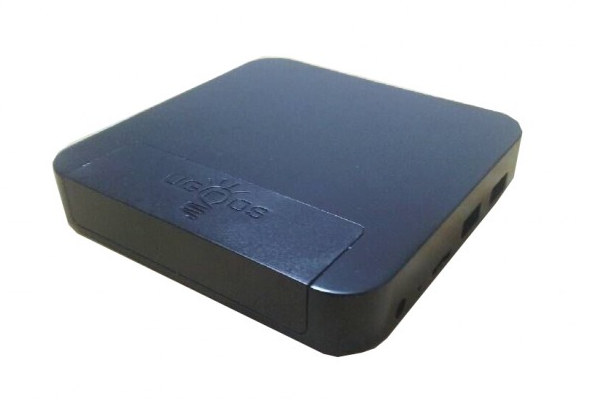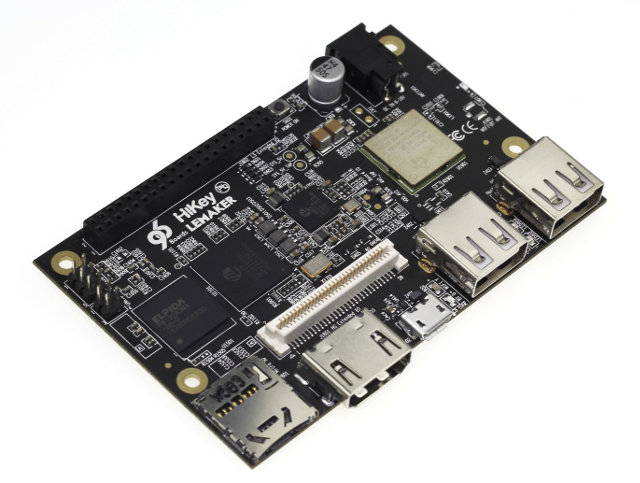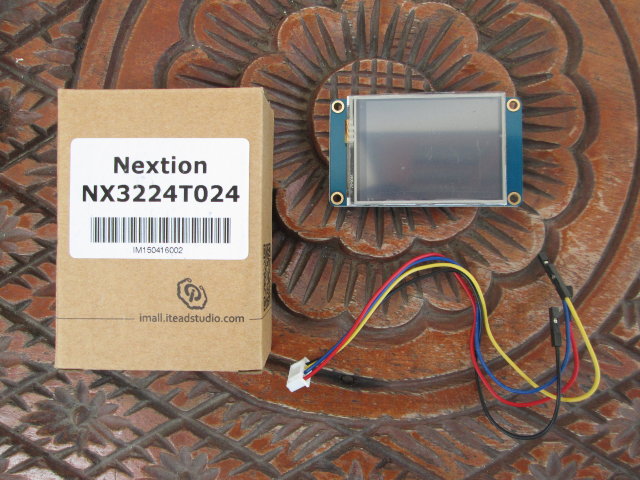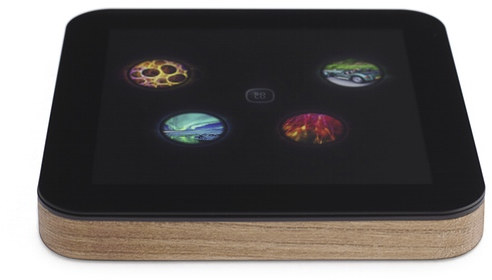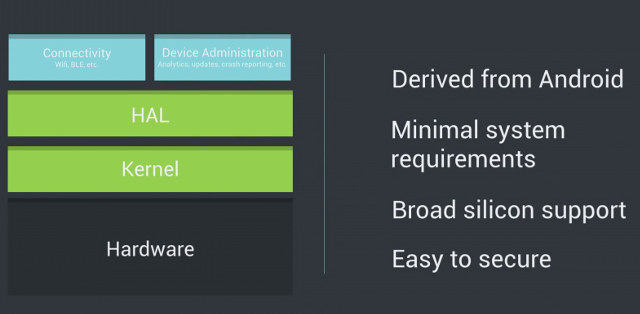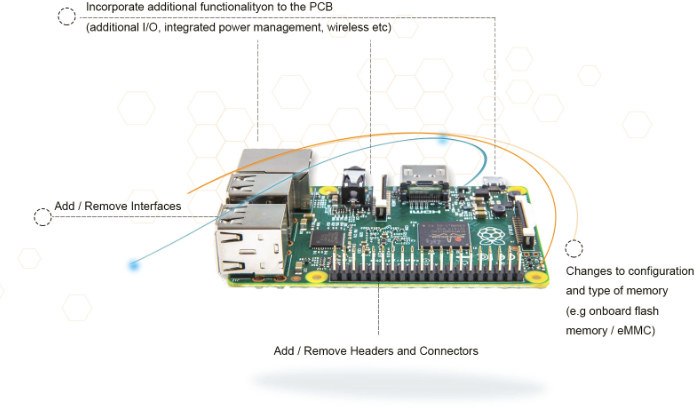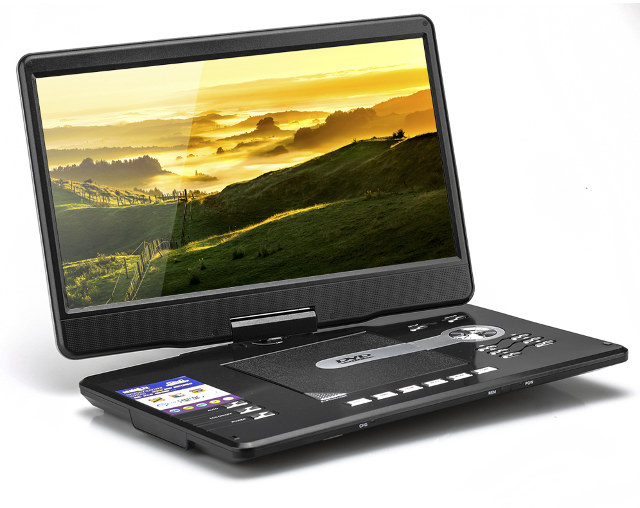A few TV boxes based on Amlogic S905 processor are currently up for pre-order such as MXQ Pro and Beelink MINI MX mini PCs with 1GB RAM, 8GB storage, and which are due to ship later this month. Ugoos is also working on their own AM1 TV box and AM2 TV stick based on Amlogic S905 processor, with some better specs, and today released a few more details about Ugoos AM1. Ugoos AM1 specifications: SoC – Amlogic S905 quad core ARM Cortex-A53 @ up to 2.0GHz with penta-core Mali-450MP GPU @ 750 MHz System Memory – 2GB DDR3 (Samsung); 4GB version likely later on Storage – 16GB eMMC flash + SD card slot Video Output – HDMI 2.0 Audio – HDMI, optical S/PDIF Connectivity – 10/100/1000M Ethernet (Realtek RTL8211F), 802.11 b/g/n/ac Wi-Fi and Bluetooth 4.0 (AP6335 module) USB – 3x USB 2.0 host ports Misc – IR receiver Power Supply – […]
Linaro Releases the First (Alpha) Version of the 96Boards Reference Software Platform
Linaro’s 96Boards initiative was launched at the beginning of the year with Hikey board, and beside the hardware specifications, 96Boards also has some software requirements that include support for “bootloader (open source), accelerated graphics support (binary or open source), a Linux kernel buildable from source code based from mainline, or the latest Google-supported Android kernel version, or the last two LTS kernels, and one of more of the following operating systems: Android, Debian/Ubuntu, Fedora/Red Hat, or an OpenEmbedded/Yocto build of a Linux distribution”. In order to achieve this goal, Linaro introduced the Reference Software Platform for 96Boards, and they’ve now pushed the first Alpha release for Hikey and DragonBoard 410c boards. The release includes a bootloader, the Linux kernel, Debian and AOSP with firmware, source code, and documentation. Some highlights of the Reference Software Platform 15.10 Alpha release include: CE Debian RPB (Reference Platform Build) Debian 8.2 “Jessie” Linux 4.3 […]
How to Use Nextion Serial Touchscreen Displays – Part 1: Standalone Mode
Itead Studio launched an Indiegogo campaign earlier this year for their Nextion TFT displays that can be connected to external board such as Arduino or Raspberry Pi via the serial interface, or even a standard computer provided you have a USB to TTL debug board. The campaign was successful with over 1,700 backers, and the company recently sent me two samples for review: a 2.4″ display and a 5″ display. In this post, I’ll look at the boards, and make a small standalone demo with Nextion Editor in Windows. Nextion NX3224T024 2.4″ Display The first item is a 2.4″ TFT display called NX3224T024_011N (non-touch) or NX3224T024_011R (Resistive touch) with 65536 color, 320×240 pixel resolution, LED backlight and up to 200nit brightness. It ships with a cable for the serial connection (5V, Tx, Rx, and GND). The back of the display features the serial connector, a micro SD used to load the […]
Rockchip Light Biz OS Improves Android’s Desktop Experience
Android is great for consuming content, but if you’ve ever tried to use it to create content, it can be an hassle, as copy / paste is hard to use, shortcuts aren’t available, and overall the operating system and apps are not designed to work well with a mouse and keyboard. Remix OS is one of the solutions, and Rockchip has been working on improving Android as a desktop replacement for while, starting with multi-window support, and recently they showcased “Light Work OS“. But yesterday Charbax, of ARMDevices.net, uploaded two new videos showing Rockchip Light Biz OS in action, probably renamed from Light Work OS shown a few months ago. The first video is the “official” Light Biz OS video released by Rockchip, which shows the main features including: Based on Android 5.1 with CTS certification Light Biz OS features can be enabled/disabled in Android settings using the Multi-window option […]
Solu Touch-Enabled Portable mini PC Runs a Cloud-linked OS on Nvidia Tegra K1 (Crowdfunding)
Solu Machines, has startup based in Finland, as decided to re-invent the computing experience. To achieve this they’ve created a battery powered mini PC based on Nvidia Tegra K1 processor and 4GB RAM, included a touch screen on the top cover that can be used as a tablet on the go, and as a touchpad when connected to a monitor, while creating a new OS called SoluOS with a new type of user interface and that stores lots of the data in the cloud, yet allows the device to run offline, and there’s more… Solu mini PC specifications: SoC – Nvidia Tegra K1 4-Plus-1 ARM Cortex-A15 CPU @ 2.3GHz with 192-core Kepler GPU System Memory – 4GB LPDDR3 Storage – 32GB “cache capacity” Display – 1440 x 1440, 450ppi, with an edge-to-edge touch Video Output – Support for up to 4K monitors apparently via USB type-C connector Connectivity – Dual-band […]
Brillo Android based OS for IoT Projects Supports ARM, Intel and MIPS Platforms
You’d think there are already enough lightweight operating systems that could provide a good enough platform for IoT and embedded projects, but Google decided to make their own Brillo operating system for IoT, based on Android, most probably to leverage the existing Android tools, and make it easier for app developers to move to the Internet of Things space. Brillo ‘s hardware requirements are pretty low as the operating system can run on devices with 32MB of RAM, and 128MB of storage. Google will provide a complete ecosystem with an embedded OS, core services, and a developer kit with tools to build, test, and debug. Just like in Android, three architectures will be be officially supports, starting with the following hardware platforms: ARM – TechNexion Pico-i.MX6UL system-on-module based on Freescale i.MX6 UltraLite and Broadcom BCM4339 802.11ac + Bluetooth 4.0 wireless module, combined with PICO-DWARF baseboard. MIPS – Upcoming MIPS Creator […]
Element14 and Raspberry Pi Trading Launch a Raspberry Pi Customization Service
While the Raspberry Pi Foundation is the main face of the Raspberry Pi board, it only mainly promotes children’s education, and a subsidiary called Raspberry Pi Trading, funded in 2013, handles design, manufacturing and distribution of the Raspberry Pi boards, and puts profits back into the charity. Raspberry Pi Trading has now partnered with Element14 to offer customization services for the Raspberry Pi board. That means you’ll be able to remove or add interfaces and headers, replace the micro SD by a more reliable eMMC flash, add new functionalities to the board, and even re-design the layout in order to better match your project’s requirements. The companies “expect order quantities to start in the region of between 3,000 and 5,000 depending upon the nature of the customization”, so the service does not seem to be available , or cost effective, for smaller orders for a few hundred units. Element14 has […]
Low Cost 15.6″ Portable DVD Player Could Be Used as a Cheap Battery Powered HDMI Display
I’ve already written about portable displays with products such as Gechic On-Lap Monitors which sells for $200 and AOC USB Portable monitors are also popular, and somewhat cheaper than I expected at $120 and $199 for a 15.6″ display at respectively 1366×768 and 1920×1080 resolution, although if you live outside the US, shipping and import fees deposit bring the price much higher. A search for “portable display” on Aliexpress only showed some smaller 3.5 to 7″ displays, but I’ve been tipped about a 15.6″ portable DVD player selling for $114.53 on Chinavasion that could be used as an external display too thanks to its HDMI input. Specifications of this portable DVD player: SoC – Mediatek Solution Display – 15.6″ TFT LED Screen with 270 degree swivel; 1366×768 resolution; 16:9 aspect ratio Disc support – DVD, CD, EVD, VCD, CD-RW, DVD-R. Hitachi lens Video Output – AV Video Input – HDMI, […]


